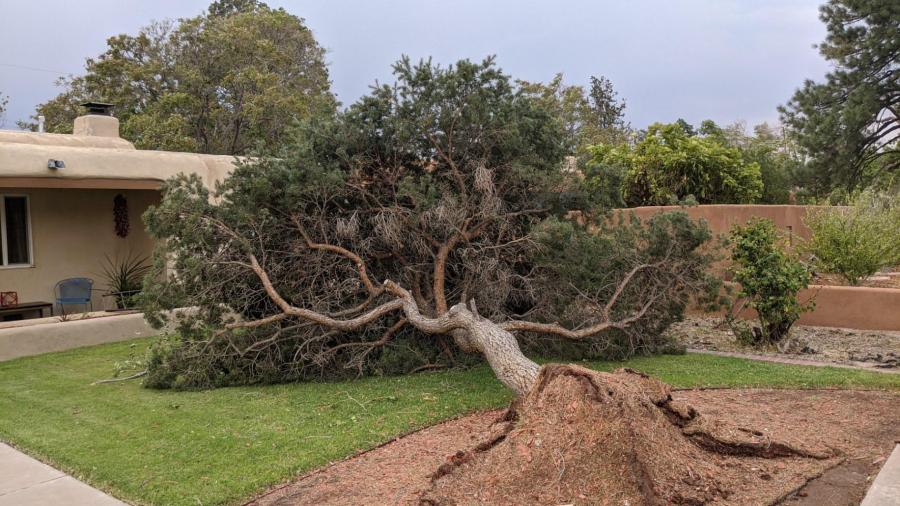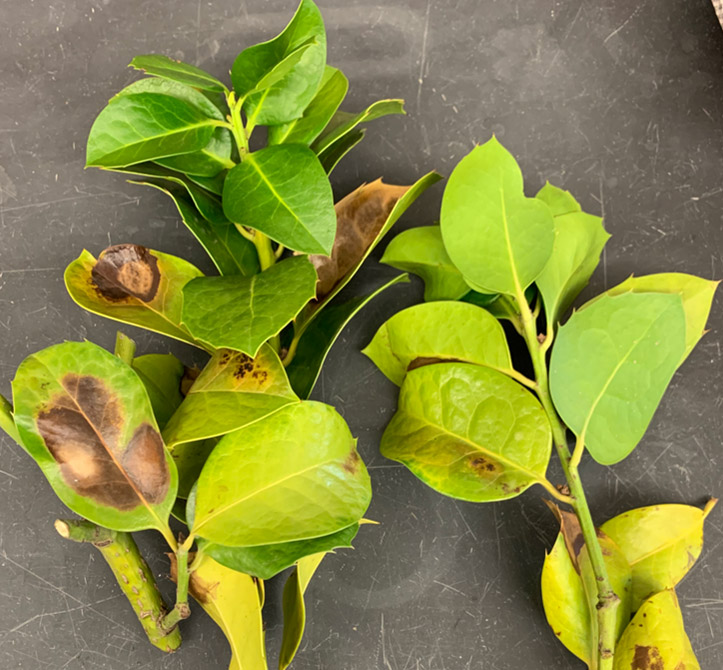We love our trees. Trees have a cooling effect in our yards by providing shade and they increase property value. When our trees do not “look good,” we try to help them, but when that one “magic” application does not solve the issue, we are often discouraged. A proper plant diagnosis will help your trees and save you time, money, and energy when dealing with the problem.
Damage to your tree can be caused by a living organism and/or environmental factors. Fungi, bacteria, viruses, nematodes, mites, insects, and animals fall under the living organism category and these tend to attack specific plants. Environmental factors that could affect trees include drought stress, salt injury, chemical injury, winter damage, improper planting, watering, and growing conditions, among others. Damage caused by living organisms can be similar to the damage caused by environmental factors. Here are a few tips to help you conclude what is causing damage to your tree:
- First, identify the tree and how old it is. Knowing this will help you become familiar with the best growing conditions for that tree, and what kinds of insects and diseases are specific to it.
- Inspect the tree – take a thorough look at the trunk, branches, and leaves. What abnormalities do you notice? Are the leaves discolored, bite marks, abnormal growth, unusual size, odd branches, or is the trunk oozing? What color is it? Does it smell? Do you notice any injuries or scars? Any holes? What size and shape?
- Look at the environment where the tree is growing. How was the tree planted (burlap, chicken wire, planted too deep, girdling roots)? What kind of soil is it planted in (sandy, clay, poor drainage, compaction, etc.)? Is the tree near a foundation, driveway, traffic areas, wall structures, etc.? Any construction or change in the landscape around the tree area?
- What watering conditions has the tree been subject to (water at the dripline, how much water, water throughout the year, etc.)? How is the water system checked? What is the soil coverage around the tree (rock, bare soil, lawn, organic mulch, etc.)? Any chemical application (herbicide, fertilizer, insecticide, etc.)?
- Gather other information. Pictures help a lot to see how the issues have progressed. Collect any insect samples. Record when the symptoms started to appear.
All this information is crucial because symptoms caused by environmental factors can be like those caused by living organisms. In some cases, a lab analysis might be the best option to confirm or dismiss the presence of a pathogen and will help you develop a treatment plan.
Consider this common scenario: A 15-year-old tree grows next to a paved driveway and a wall, with gravel mulch around the base. Underneath the gravel is a plastic layer of weed fabric.

The tree does not receive enough water for many years and gets no rainwater through the weed fabric. This tree is struggling to develop a good root structure and starts looking unhealthy. Eventually the tree gives up and a strong wind brings it down. In this case, chemical treatment will not improve the tree’s appearance because it is not addressing the true cause of the problem: watering improperly.
Diagnosing what is wrong with your tree will take time, but it is worth it. These local resources can help:
- NM County Extension Office: https://aces.nmsu.edu/county/
- Bernalillo County Cooperative Extension Service: https://aces.nmsu.edu/county/bernalillo/
- NMSU Plant Diagnostic Clinic: https://aces.nmsu.edu/ces/plantclinic/


